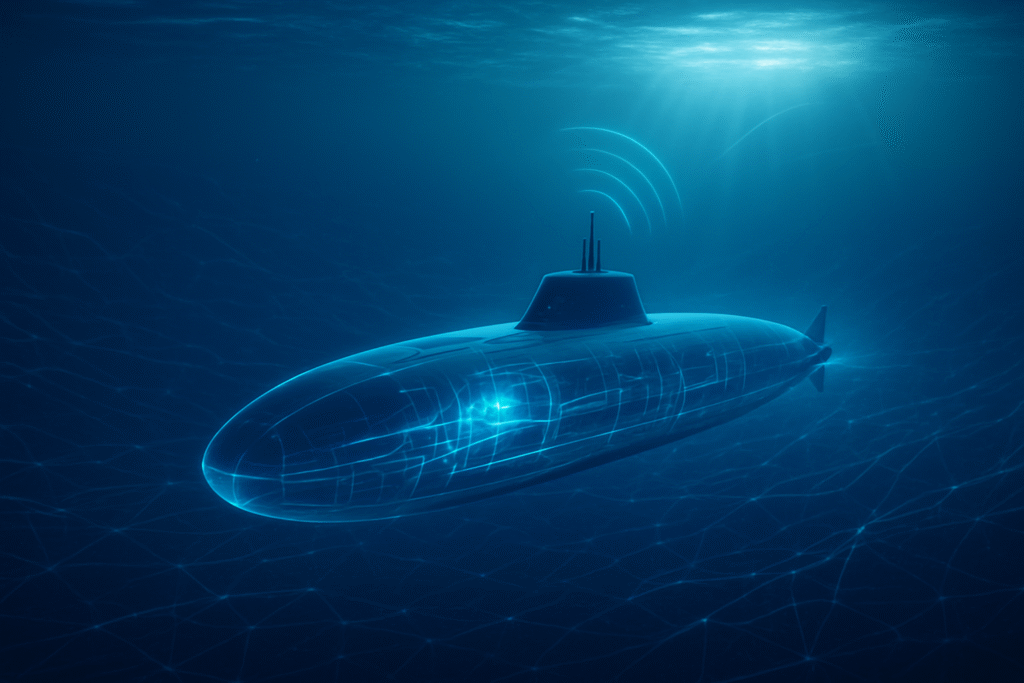
The Defence Research and Development Organisation (DRDO) of India has unveiled a series of groundbreaking indigenous 'High Energy' systems poised to revolutionize submarine operations for the Indian Navy. These advancements, primarily the indigenously developed Air Independent Propulsion (AIP) system and the 'signal star naval flare' system, promise to significantly enhance submarine stealth, endurance, communication, and overall safety at sea. With the AIP system set for integration into the Kalvari-class submarines starting in 2025, these developments mark a pivotal moment in India's pursuit of self-reliance in critical defense technologies, positioning the nation among an elite group capable of deploying such advanced underwater capabilities.
These 'High Energy' innovations are not merely incremental upgrades; they represent a fundamental shift in how conventional submarines will operate, offering unprecedented submerged endurance and discreet communication capabilities. The immediate significance lies in the heightened operational effectiveness and strategic advantage they confer upon the Indian Navy, drastically reducing vulnerabilities while expanding mission profiles.
Technical Prowess: Unpacking India's Submarine Stealth and Communication Breakthroughs
At the heart of DRDO's 'High Energy' thrust are two distinct yet complementary systems: the Air Independent Propulsion (AIP) system and the 'signal star naval flare' system. The AIP system, developed by DRDO's Naval Materials Research Laboratory (NMRL), is a 270-kilowatt fuel cell-based technology. Unlike many international AIP systems, DRDO's design uniquely generates hydrogen on-board from sodium borohydride, reacting it with liquid oxygen to produce electricity. This eliminates the hazardous requirement of carrying hydrogen onboard, a significant safety advantage for submarines, and produces only water as a byproduct. This sophisticated design allows conventional submarines to remain submerged for up to 14 days, a dramatic increase from the typical 15-20 hours of non-AIP diesel-electric submarines. This extended underwater stealth drastically reduces the submarine's vulnerability by minimizing its need to surface, which is when it is most susceptible to detection. Furthermore, the fuel cell's lack of moving parts ensures a low acoustic signature, making the submarine significantly quieter and harder to detect, thus enhancing its survivability.
Complementing the AIP system is the 'signal star naval flare' system, a product of DRDO's High Energy Materials Research Laboratory (HEMRL) in Pune. This system is engineered for discreet communication and emergency signaling, ejected from a submarine's signal ejector. It ascends through the water column and, upon reaching the surface, ignites to emit an intense, star-like light visible over long distances, even in challenging conditions. Its robust, pressure-resistant casing ensures reliable operation in deep underwater environments. This technology provides a crucial means for submarines to communicate with surface units without breaking radio silence, thereby maintaining stealth. In distress situations, a red flare can guide rescue units, while a green flare aids in identification and coordination during complex fleet maneuvers, significantly bolstering safety and operational coordination.
Initial reactions from the Indian Navy and defense experts have been overwhelmingly positive, highlighting the strategic depth these indigenous technologies add to India's maritime capabilities. The on-board hydrogen generation feature of the AIP system, in particular, has been lauded as a significant safety and operational differentiator compared to existing international AIP technologies. The integration of the signal star naval flare system into Kalvari-class submarines, which commenced with a handover to the Indian Navy on September 1st, 2025, immediately boosts their operational effectiveness. The AIP system's retrofit into the Kalvari-class, commencing in 2025, solidifies India's position as a leader in advanced conventional submarine technology.
Strategic Ripples: Impact on Defense Contractors and Global Naval Powers
While DRDO's 'High Energy' systems are primarily government-led indigenous developments for the Indian Navy, their successful deployment has significant implications for defense contractors and global naval powers. Domestically, companies like Mazagon Dock Shipbuilders Limited (MDL), already involved in submarine construction and retrofitting, stand to benefit immensely from the integration and maintenance contracts associated with these advanced systems. Collaborations with international partners, such as Naval Group (Euronext: NAVAL) for AIP integration, also highlight the strategic importance and global recognition of DRDO's technological prowess. This fosters a robust domestic defense ecosystem, promoting further innovation and self-reliance under the 'Aatmanirbhar Bharat' initiative.
Competitively, these developments elevate India's standing in the global defense landscape. Possessing indigenous fuel cell-based AIP technology places India among an elite group of nations, offering a strategic advantage in conventional submarine warfare. This could potentially disrupt the market for foreign AIP systems and enhance India's export potential for defense technologies in the long run. For major AI labs and tech companies, particularly those involved in advanced materials, energy systems, and underwater acoustics, these projects demonstrate the cutting edge of applying scientific research to critical defense applications. The emphasis on stealth, extended endurance, and secure communication will likely spur further research and development in these areas across the defense tech sector globally.
The success of DRDO's AIP system, in particular, serves as a testament to the potential for indigenous innovation to challenge and even surpass existing foreign technologies. This development strengthens India's market positioning as a formidable player in defense technology, capable of developing and deploying advanced military hardware tailored to its unique strategic requirements. It also sends a clear message about the nation's commitment to reducing dependency on foreign imports for critical defense capabilities, potentially shifting procurement strategies for other nations looking for similar advanced, reliable, and cost-effective solutions.
Broader Horizons: AI's Role in Modern Naval Warfare and Future Trends
DRDO's 'High Energy' systems fit seamlessly into the broader AI landscape and the evolving trends in naval warfare, particularly the drive towards enhanced autonomy, stealth, and networked capabilities. While the AIP and flare systems are not directly AI-driven, they enable platforms that will increasingly integrate AI for mission planning, data analysis, threat detection, and even autonomous operation of auxiliary systems. The extended submerged endurance provided by AIP creates a more persistent platform for AI-powered intelligence gathering, surveillance, and reconnaissance (ISR) missions. Submarines equipped with these systems can serve as crucial nodes in an AI-enhanced naval network, providing real-time data for decision-making across a fleet.
The impact on naval strategy is profound. Submarines, already formidable stealth assets, become even more potent force multipliers. Their prolonged underwater presence, combined with discreet communication, makes them ideal for patrolling vast oceanic territories, conducting special operations, and deploying future AI-enabled underwater drones and sensor networks. Potential concerns, as with any advanced military technology, revolve around proliferation and the implications for regional stability. However, for India, these systems primarily serve a defensive posture, bolstering its maritime security and strategic deterrence.
Comparisons to previous AI milestones in defense, such as the development of advanced targeting systems or autonomous drones, highlight a consistent trend: the relentless pursuit of capabilities that reduce human risk, extend operational reach, and enhance decision-making speed. DRDO's 'High Energy' systems represent a similar leap for underwater platforms, ensuring that conventional submarines remain highly relevant and effective in an era increasingly dominated by advanced sensors and networked warfare. This development underscores the critical importance of energy independence and secure communication in modern military operations, areas where AI is also making significant inroads for optimization and resilience.
The Future Beneath the Waves: Next-Gen Submarine Operations
Looking ahead, the integration of DRDO's 'High Energy' systems paves the way for several exciting near-term and long-term developments in submarine technology. In the near term, we can expect the successful retrofit of the AIP system across the entire Kalvari-class submarine fleet, significantly enhancing their operational profile. This will likely be followed by the development of next-generation AIP systems with even greater power density and endurance, potentially exploring alternative fuel cell chemistries or even modular designs for easier integration. The 'signal star naval flare' system could also see enhancements, perhaps incorporating encrypted data transmission capabilities or more sophisticated multi-spectral signaling for different operational scenarios.
Potential applications and use cases on the horizon are vast. Extended endurance submarines could serve as launch platforms for advanced underwater drones and drone swarms, which DRDO is reportedly also developing. These AI-powered drones, launched from torpedo tubes, could significantly expand a submarine's intelligence gathering, surveillance, and even strike capabilities, pushing the boundaries of autonomous underwater warfare. Such systems would also enhance anti-submarine warfare (ASW) capabilities by acting as forward-deployed sensors. Challenges that need to be addressed include the continuous miniaturization of these energy systems, ensuring their resilience in extreme underwater environments, and developing robust AI systems for managing the complex energy profiles and communication protocols of future submarines.
Experts predict a future where conventional submarines, far from being obsolete, will become even more versatile and lethal due to technologies like AIP and AI integration. They foresee a naval landscape where submarines act as highly autonomous, networked, and stealthy platforms, capable of operating independently for extended periods while contributing to a larger, AI-orchestrated naval strategy. The focus will be on seamless data fusion, predictive maintenance, and adaptive mission planning, all powered by advanced AI algorithms, making the submarine a true underwater supercomputer.
Charting the Depths: A New Era for Indian Naval Power
In summary, DRDO's indigenous 'High Energy' systems, particularly the Air Independent Propulsion (AIP) system and the 'signal star naval flare' system, represent a monumental leap forward for India's naval capabilities. These technologies are set to redefine submarine operations by dramatically extending submerged endurance, enhancing stealth, and providing crucial discreet communication and safety mechanisms. The immediate integration of the flare system and the upcoming retrofit of AIP into the Kalvari-class submarines underscore India's commitment to self-reliance and its emergence as a leader in advanced defense technology.
This development's significance in AI history, while not directly AI-driven, lies in its foundational role in enabling the next generation of AI-powered naval platforms. By providing the essential elements of extended stealth and secure communication, these systems create the perfect environment for future AI integration, from autonomous mission planning to intelligent sensor networks. The long-term impact will be a more potent, resilient, and strategically flexible Indian Navy, capable of projecting power and safeguarding national interests across vast maritime domains.
What to watch for in the coming weeks and months includes further announcements regarding the progress of AIP integration, details on the performance benchmarks of these systems in operational environments, and any new developments in DRDO's concurrent projects, such as submarine-launched drones. These advancements collectively signal a new era for underwater warfare, where India is not just a participant but a significant innovator.
This content is intended for informational purposes only and represents analysis of current AI developments.
TokenRing AI delivers enterprise-grade solutions for multi-agent AI workflow orchestration, AI-powered development tools, and seamless remote collaboration platforms.
For more information, visit https://www.tokenring.ai/.





